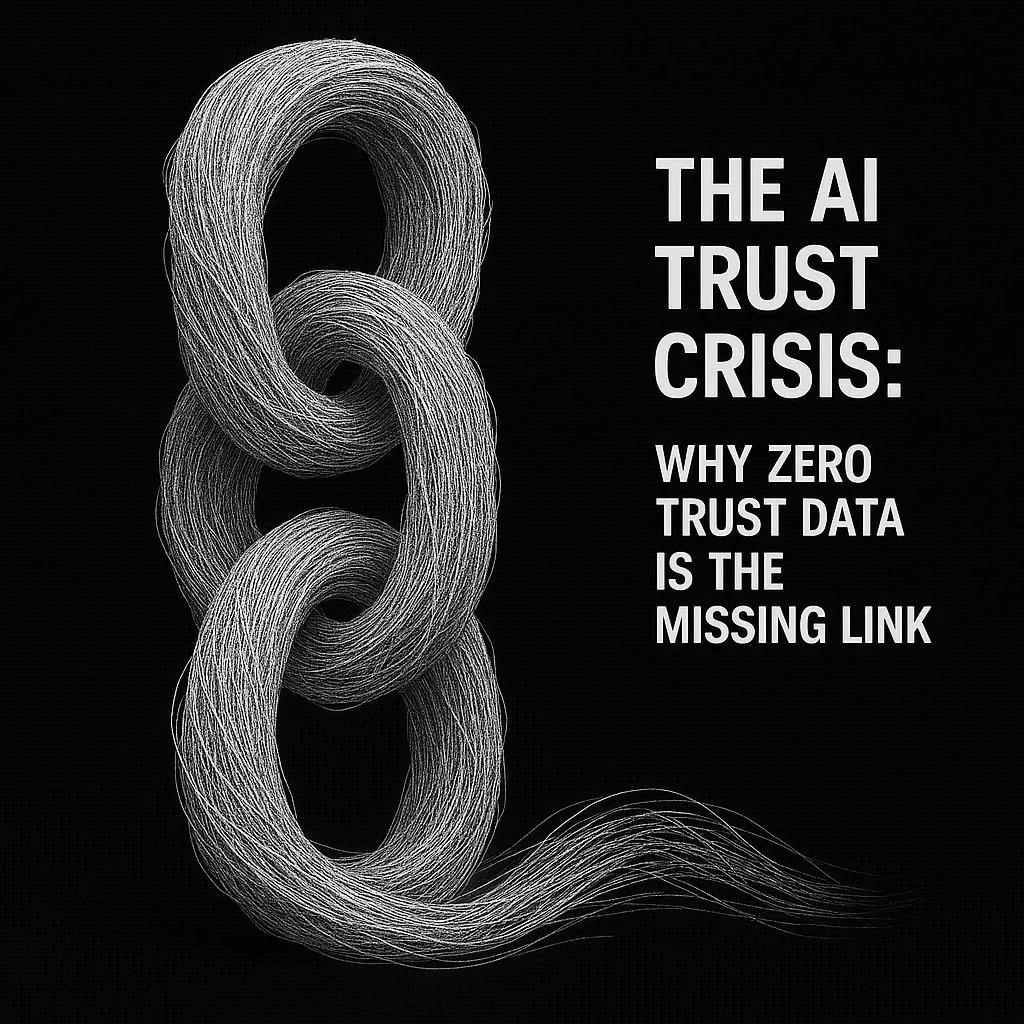The AI Trust Crisis: Why Zero Trust Data Is the Missing Link
Simon Willison’s The AI Trust Crisis outlines a growing challenge: people no longer trust what companies say about how their data is used in AI systems. Dropbox, OpenAI, and others are making promises about privacy, but those promises are often undermined by ambiguity, opacity, and a lack of verification.
This is not just a PR problem — it’s a data governance problem. And it’s one that Zero Trust Data directly addresses.
What the Article Exposes: Key Trust Gaps
Willison identifies several fault lines in today’s AI data practices:
Ambiguous Consent
Dropbox says:“We will not use customer data to train AI models without consent.”
But what counts as “training”? What about “fine-tuning” or “improving performance”? Most users don’t know the difference, and the terms aren’t defined.Opacity of Data Handling
Willison asks:“If I paste a private document into ChatGPT to ask for a summary, will snippets of that document be leaked to future users after the next model update?”
Users have no visibility — there’s no proof either way.Perception of Misuse
“OpenAI are training on every piece of data they see, even when they say they aren’t” is the new “Facebook is listening to your phone’s microphone.”
In other words, people assume the worst because there’s no audit trail to prove otherwise.Black-Box Systems
AI companies rarely publish detailed disclosures of how their models are trained, what data is included, or how user inputs are processed and retained.
The result? A trust deficit that makes users skeptical even when companies act responsibly.
How Zero Trust Data Closes the Gap
Zero Trust Data assumes no system, user, or vendor is automatically trustworthy. Every interaction with data must be explicit, auditable, and policy-enforced. Applied to AI, this means moving from vague promises to provable governance.
Here’s how:
| Trust Gap | Zero Trust Data Control | Bullet-Proof Example |
|---|---|---|
| Ambiguous Consent | Fine-grained consent & policy enforcement | A user uploads a file for summarization. Policy ensures: “This file can be used for inference only, never training.” The file is cryptographically tagged with this rule, preventing it from entering a training pipeline. |
| Opacity of Data Handling | Data lineage & usage logs | Every interaction is logged: who accessed it, when, for what purpose. If regulators ask, Dropbox could show: “This file was used for inference on 9/10/25 at 2:41pm. It was deleted within 30 days. It was never copied into training storage.” |
| Perception of Misuse | Independent attestation & key control | Instead of trusting the vendor, the customer controls encryption keys. Even if Dropbox wanted to use the data for training, it can’t decrypt without customer approval. |
| Black-Box Systems | Transparency reports & model cards | Each AI provider publishes a machine-readable “data card” stating exactly what datasets were used, retention policies, and opt-in sources. Users and regulators can verify compliance. |
Real-World Parallels
Healthcare: HIPAA requires that patient data only be used for treatment, payment, or operations unless explicit authorization is given. Zero Trust Data enforces this by cryptographically binding policies to each record — preventing accidental use in unauthorized analytics or training.
DoD & Government: Under FISMA and NIST 800-53, agencies must prove control over sensitive data. A Zero Trust Data approach provides audit logs showing not only who accessed classified records, but also why — a direct counter to the “black-box” problem.
Financial Services: When training fraud detection models, Zero Trust Data ensures that personally identifiable information (PII) is excluded or anonymized at ingestion, with cryptographic proof that no leakage into the model occurred.
Why This Matters for AI Governance
Trust will not be rebuilt with statements of intent alone. It requires technical proof. Zero Trust Data makes that possible:
Proof over promises: Policies aren’t marketing copy — they’re cryptographically enforced.
Audits over assumptions: Every data action leaves a verifiable trail.
Control over convenience: Customers can hold their own keys, limiting vendor overreach.
Transparency over opacity: Reports and data lineage make model pipelines understandable.
Final Takeaway
Simon Willison is right: we are in an AI trust crisis. Users believe their data is being misused because companies cannot demonstrate otherwise.
Zero Trust Data offers the missing governance layer. By enforcing policies at the data level — not just at the network or identity layer — organizations can prove compliance, preserve trust, and prevent misuse.
If AI companies adopt Zero Trust Data now, they won’t just avoid regulation and backlash — they’ll create a competitive advantage built on trust, transparency, and verifiable governance.
At XQ, we’re helping organizations implement Zero Trust Data controls across cloud, hybrid, and AI environments. Want to learn how this applies to your AI strategy? Let’s talk.

